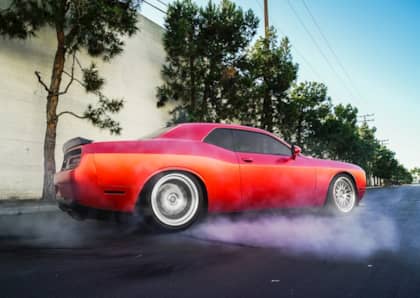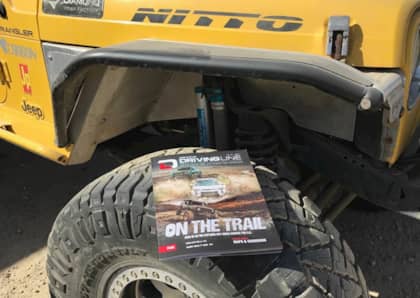Suspension 101
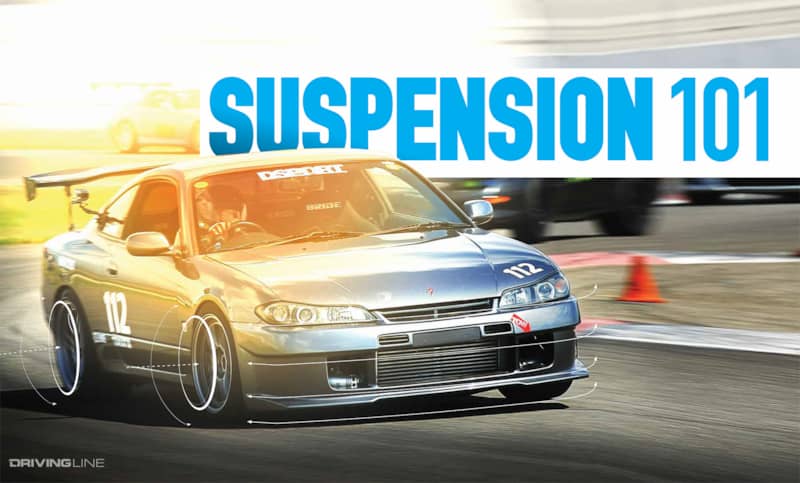
Making your car handle well is a really complicated task if you overthink it. Ride frequencies, roll centers, camber curves, scrub radii... it’s enough to make you build show cars instead. So, we have an easy solution for you: ignore all of that stuff. Odds are that you can make your car handle better than most by knowing the following five things.
Number One: Tires
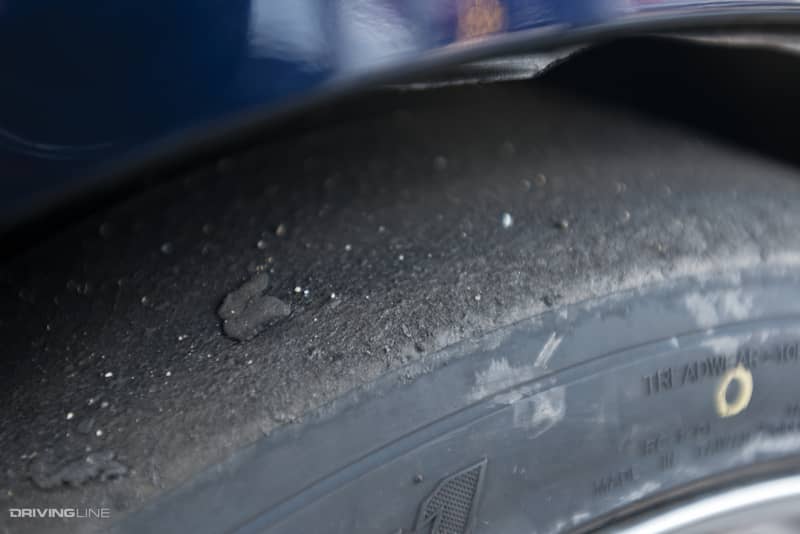
Your tires are by far the most important thing to consider where handling is concerned. A set of sticky tires can make even a tragic suspension fast. By the same token the best, most perfectly-tuned, aligned and corner-weighted track car will be a disaster on Costco Economaster Treadlife Supremes.
So how do you pick the right tires? That’s a tough one. The tire industry seems determined to make tire choice as difficult as possible. Tire names are a meaningless alphanumeric soup. What's the difference between a Nitto NT01, NT05, NT05R and NT555R? The reality is that they're all very different tires distinguished by a few changes in numbers and letters.
Sometimes you can judge a tire by its tread pattern. In general, performance tires will have bigger tread blocks, since they are physically stronger and less likely to be ripped apart by hard driving. Performance is fashionable, though, and despite all the hype about tread stability, water evacuation and the like, tread patterns are largely dictated by fashion. You'll end up with some tires that are designed to look like race tires but wear like street tires. But, as soon as you write off tires like these as worthless, the tire companies will go and change them.
What about treadwear rating? You might be thinking, “Isn’t a tire with a treadwear rating of 40 far grippier than one with a 400?” That’s probably true. The treadwear rating is a decent indicator of a tire’s performance capability, but don’t nitpick it. A 160 treadwear is not necessarily stickier than a 200. The more modern a tire design, the higher its treadwear rating can be while still being sticky. In fact, the Uniform Tire Quality Grade Standards (UTQG) treadwear rating is actually the minimum treadwear of that specific tire. It's at the manufacturer's discretion whether they want to classify a high performance tire as a "100" treadwear tire for marketing purposes, even though it may offer enough tread life to be comparable to a "200" treadwear tire. Don't waste your time comparing treadwear ratings between manufacturers, as every tire company hires its own independent testing company to conduct the tire tests. Unless any inconsistencies come up in the final data, the Department of Transportation doesn't bother to regulate.
In the end, experience is the best tool for picking a tire. If you don’t have enough experience, use somebody else’s. See who is fast at the track and ask what tires they like, and why.
Number 2: Travel
Having enough suspension travel is almost as important as having good tires. Think about this when you’re fantasizing about how low you want your car to be. Some cars, like the old double-wishbone Civics, have so much travel that you can be in the weeds and still have plenty of travel. Others, like the MAZDASPEED3, can hardly be lowered at all before they start pounding the bump stops.

How much travel you need is determined partly by the terrain you’re driving on and partly by your suspension setup. Having stiffer springs means your suspension will move less, so you don’t need as much travel. The same is true if you have a lot of low-speed damping from your shocks. The next item might not be so obvious: you’ll need more travel and/or a stiffer suspension if you have really sticky tires. The reason is simple; more grip on the road means more body roll, which uses up more travel.
There are ways to maximize the amount of usable suspension travel range that involve adding more parts and making more changes to the entire system to balance out all the other dynamic factors. The simplest travel solution, though, is simply not to lower your car so much.

Number 3: Balance

The third thing you need to know to make your car handle better is how to adjust its balance. This is not a really hard task if you remember that more load at one end of the car will make that end start sliding earlier. For example, a nose-heavy front-drive car would naturally have a lot of understeer, and this is something that you want to reduce. What you should do is think about the problem in reverse. Instead of trying to reduce understeer, you need to think about increasing oversteer.
More oversteer comes from putting more load on the rear tires. More load on the rear tires comes from installing a stiffer rear anti-roll bar, stiffer rear springs, stiffer rear shocks or all of the above. If you find you need more understeer in your FF vehicle, try stiffer components at the front. The entire premise also works the other way around; if you’re already too stiff on one end, go softer at the opposite end to obtain the desired effect.
Now, assuming you’re starting with a reasonably competent setup and you want to start adjusting the balance, there is something to keep in mind; a change in anti-roll bar diameter will make the most dramatic change in handling balance. Changing spring rates is probably second in terms of effects produced by change. If you have an adjustable sway bar (where you can change the lever arm) this is probably third. Turning the knob on adjustable shocks is a distant fourth; this is best reserved for fine-tuning an already good setup.

Just beware: if you haven’t properly addressed suspension travel, your tuning attempts might do exactly the opposite of what you want. A car that understeers because the front suspension bottoms out in hard corners could actually get less understeer from a bigger bar because the bar would reduce roll, which would lift the outside front suspension back off the bump stop. That’s why the suspension travel thing is the second thing you needed to know, and this is the third.
Number Four: Dampers

Dampers are voodoo. Just like the black arts, they are both extremely powerful and virtually impossible to figure out without years of study. Good dampers can make a car ride and handle beautifully. Bad ones can render your every attempt at adjustment useless. Figuring out how to choose good dampers is even harder than figuring out tires, but it works on the same basic principle: Find some good dampers on someone else's fast car and ask what they are and who tuned them. Then go buy your dampers from them.
Number Five: Alignment

The last thing you need to know to make your car handle to its full potential is that the alignment matters a lot. It’s also confusing to figure out. Here’s a short-form version of what you need to remember:
- Toe-in: in the front suspension improves straight-line stability but makes turn-in sluggish.
- Toe-out: in the front makes your car darty in a straight line, darty on turn-in (some people like that), and tears up the inside of the front tires.
- Toe-in: in the rear suspension promotes understeer.
- Toe-out: in the rear makes you crash.
- More camber: means more grip when cornering, but also means less grip during acceleration, braking, and everything involving straight lines.
- Dial in more camber: at the end where you want more grip.
- Caster: Ideally, dial in as much positive caster as is reasonably possible for optimum straight-line stability. Although it makes steering more heavy, most power-steering systems make this effect a non-issue.
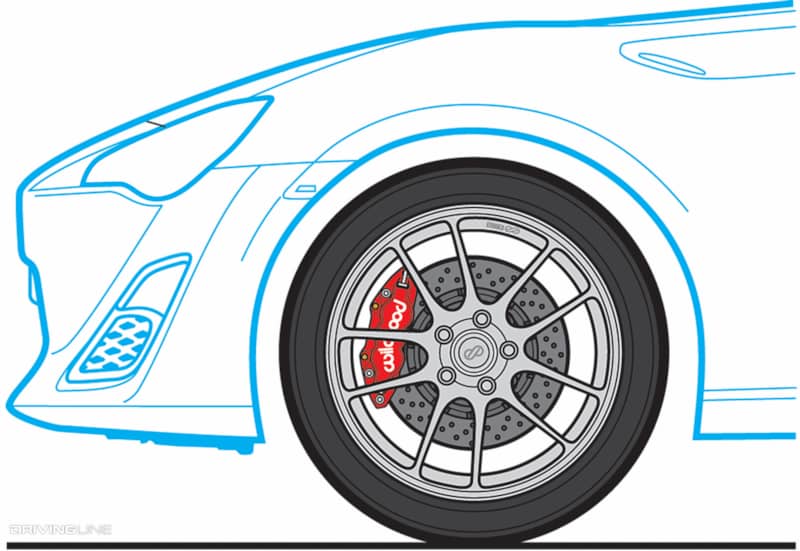
Got It?
Ok, now that we’ve given you advice on how to set up your gear to make your car handle better, get out on the track and practice your driving. Racing is a reality-based experience; it’s not GT5. It’s not even Gran Turismo. In reality we have this thing called physics, and that’s some of what was just explained to you. Know it and respect it, or it will kick your ass. And remember: there is no reset button.
(Original story and photos: Dave Coleman for DSPORT)





